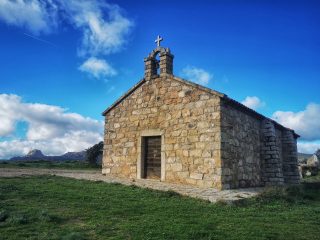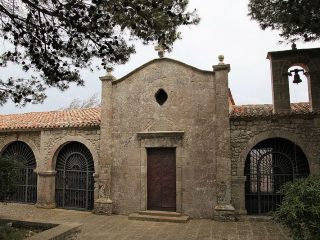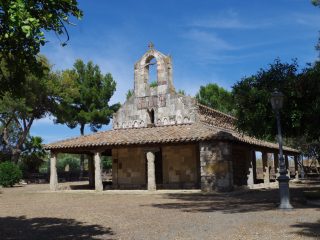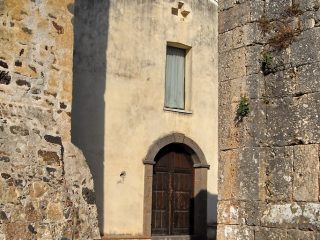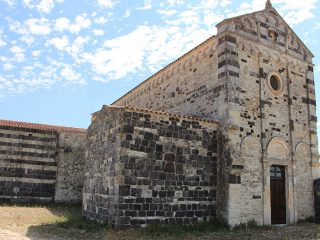The church of Santa Maria di Sibiola can be found in the countryside of Serdiana, where the village of Sibiola once stood.
In 1338, it is recorded as being a property owned by the Benedictine monks at the San Vittore Abbey in Marseilles.
Based on formal data, we can attribute it to the first quarter of the XII century.
The structure displays a layout with two naves, each with its own entrance and with a semi-circular end with oculus.
Both naves are barrel-vaulted articulated with soffits and are divided by arches on pillar bases with capitals.
While the internal wall has been produced with sandstone cantons, the outside one has been produced with small square cantons. There are also spaces set aside for ceramic basins, already in fragments when they were discovered.
The facade has a flat end and is cordoned off by corner pilasters. Each nave has a corresponding curved portal and a light: to the south we have a double-arched window, in the other a monophora.
Furthermore, the facade, side and apse are decorated with suspended arches on carved shelves.
The church also had a double bell gable, of which only the basal ashlars have survived. Indeed, there is a stairway on the northern side providing access to the roofs.
Inside the church, we find an Altarpiece of the Universal Judgement, a work from the XV century attributed to the Master of Olzai, currently housed in Cagliari’s National Gallery, with strong Iberian-Flemish undertones.







